

Ladakh, often referred to as the 'Land of High Pass', is famous for its beautiful surroundings and challenging panoramas. Apart from this, Ladakh is also known for its rich heritage of culture of the time of Tibetan Buddhism. The rich past of this place can be seen in the vibrant celebrations of the region that offer guests a unique glimpse into the cultural and social life of the people of Ladakh. Festivals become more prominent with unique events, masks dances, and much more traditional music. During the festival time all the visitors are heartily welcome to this place engage in the cultural life of the Ladakhi people and get to know the authentic side of Ladakh.
Every occasion or festival in Ladakh gives an unforgettable experience, fusing religious belief, celebration, and the past. The guests understand the distinctive traditions and practices of Ladakh when they are immersed in the celebrations and festivities of the region. These events are most significant and vital for those who desire to connect more deeply with this fascinating and mesmerizing place to make the trip to Ladakh, an unforgettable journey.
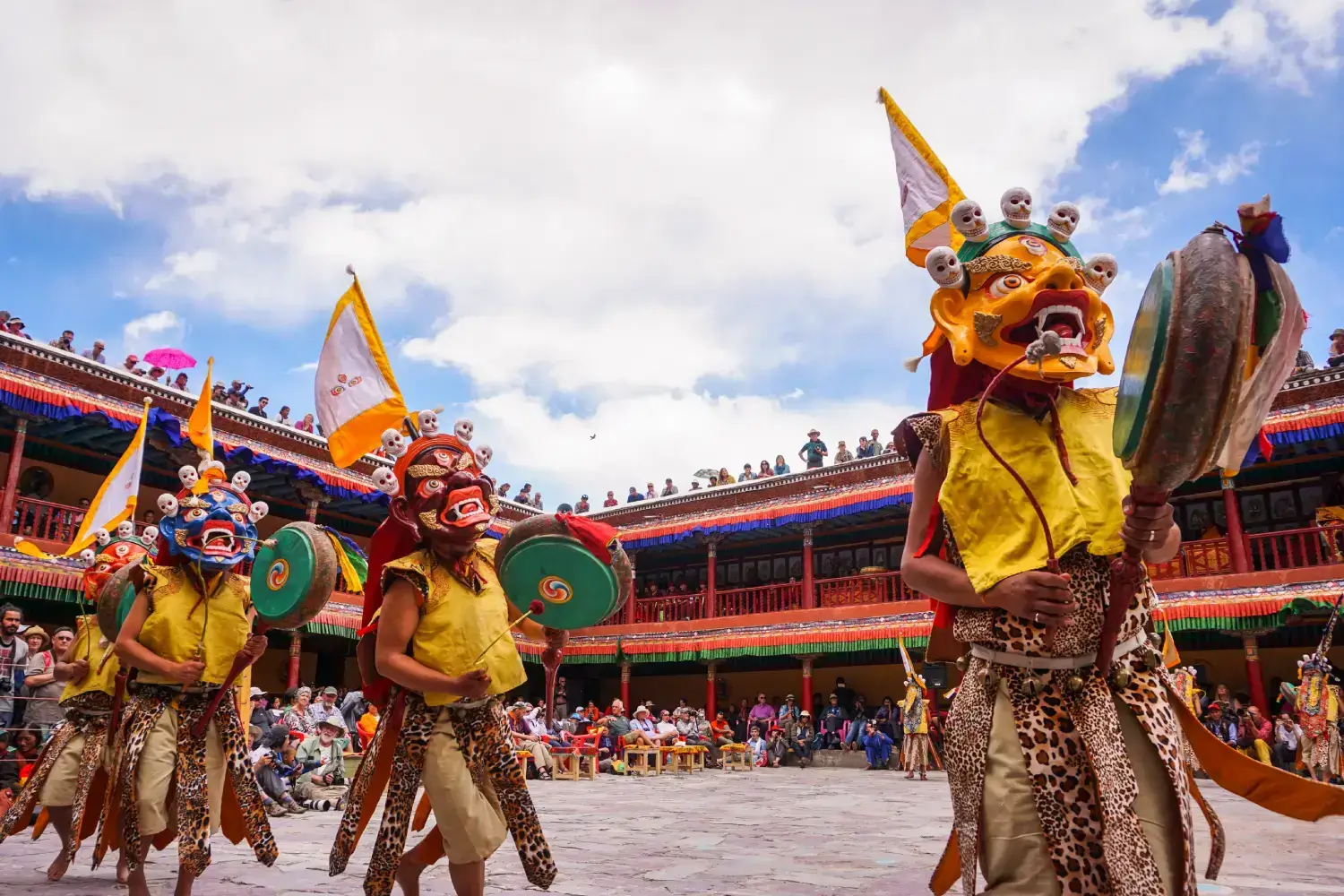
Celebrated annually at the most famous and richest monastery, the Hemis Festival is among the most famous and beautifully celebrated festivals in Ladakh. This vibrant celebration typically celebrated in June or July remembers the individual who has been linked with establishing Buddhism in Tibet: Guru Padmasambhava, also known as Guru Rinpoche. Throughout the festival, monks don elegantly decorated masks and lavish clothes to perform the religious mask dance, dance, which is also known as the Cham dance, which portrays the victory of good over evil.
Traditional music is performed on huge drums, longhorns, and cymbals that complement the rituals and dance, creating a magical and fascinating ambiance. The most significant part of the festival is highlighted by the Thangkas, a famous artwork of Buddhists which is only revealed once in 12 years during this festival. The event additionally serves as a religious occasion that attracts and forms a bond between locals as well as tourists to celebrate the rich heritage and culture of Ladakh. Hemis stands out in all the festival tourism in Ladakh and attracts thousands of tourists all over the nation.

One of the huge celebrations, the Losar Festival brings in the Tibetan New Year and is celebrated extensively in Ladakh. Losar is an occasion of purity and regrowth when the previous years are said goodbye and the beginning of the new year is embraced with excitement and joy. The festival is celebrated in the month of December or January. The spiritual and cultural legacy of Ladakh is displayed by an abundance of traditions and events that take place over a few days. In order to get ready for Losar, homes are cleaned thoroughly for several weeks before, new clothes are purchased and specific and unique offerings are made to God.
On the very first day of the Losar, ghee lamps light up and ceremonies are carried out in the hope of pleasing the deities and ensuring a happy coming new year. The family assembles for a meal on traditional dishes like ghutuk, a special soup. Journey to monasteries, where guests can offer prayer and engage in the rituals practiced by the monks, to complete the occasion.
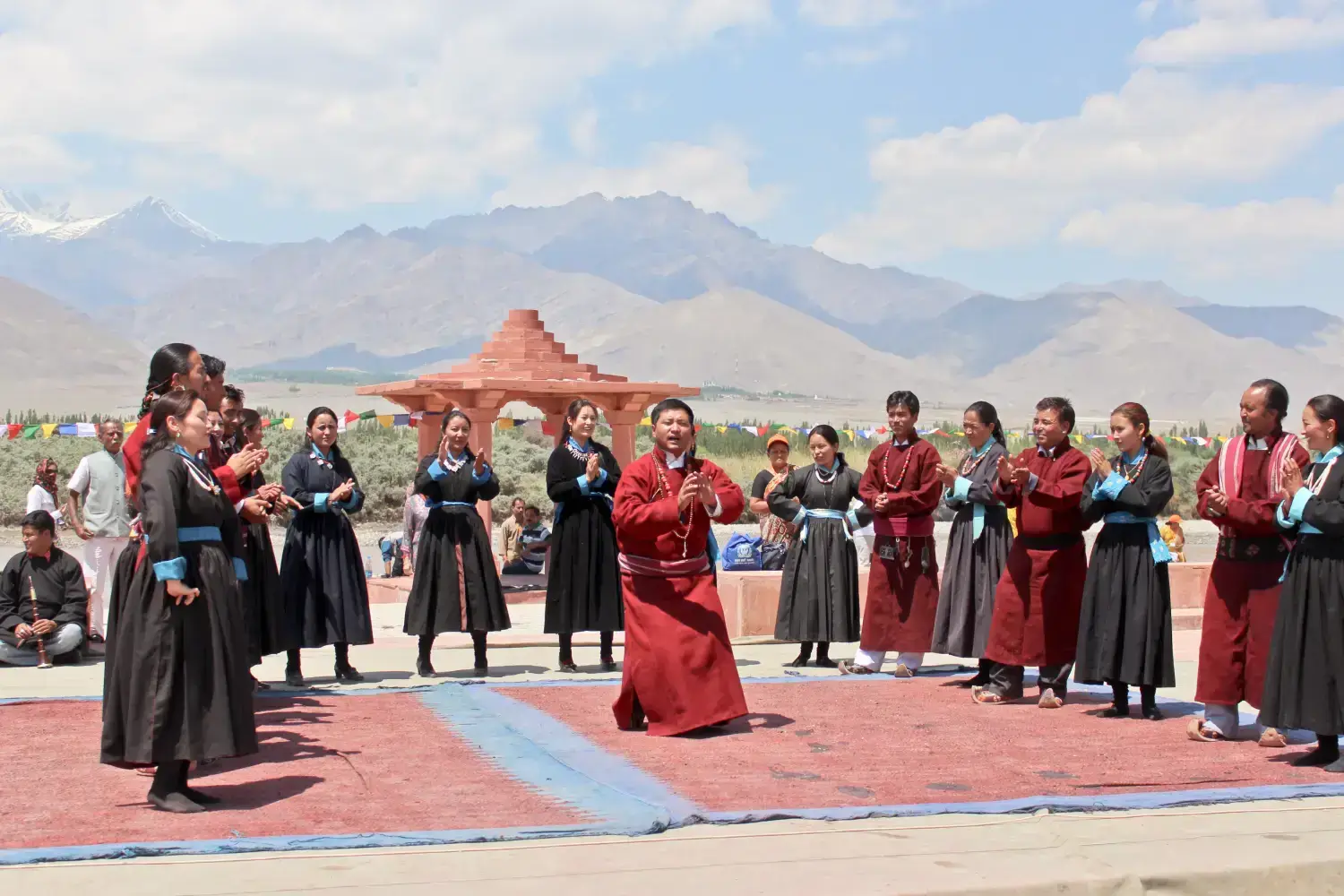
Celebrated every year in the beautiful region of Ladakh, the Sindhu Darsan festival is the colorful and vibrant festival of the Himalayas of the northernmost section of India. Considered to be the birthplace of one of the most ancient civilizations in history, the huge Indus River, which is also known regionally as the Sindhu River, is the focus of this three-day celebration, which is usually celebrated in June. Devoted to celebrating the river, which symbolizes the prosperity and solidarity of the country, the festival was started in the year 1997 with the aim of unity among communities and national unification by connecting individuals from every region across India.
The festival begins with an official greeting for guests who carry water from various rivers around the nation, representing the unification of different traditions and values into one harmonious whole. A broad variety of religious activities, including music, local dances, and Buddhist monks conducting traditional ceremonies, take place to mark the event and highlight various heritages of culture in India.
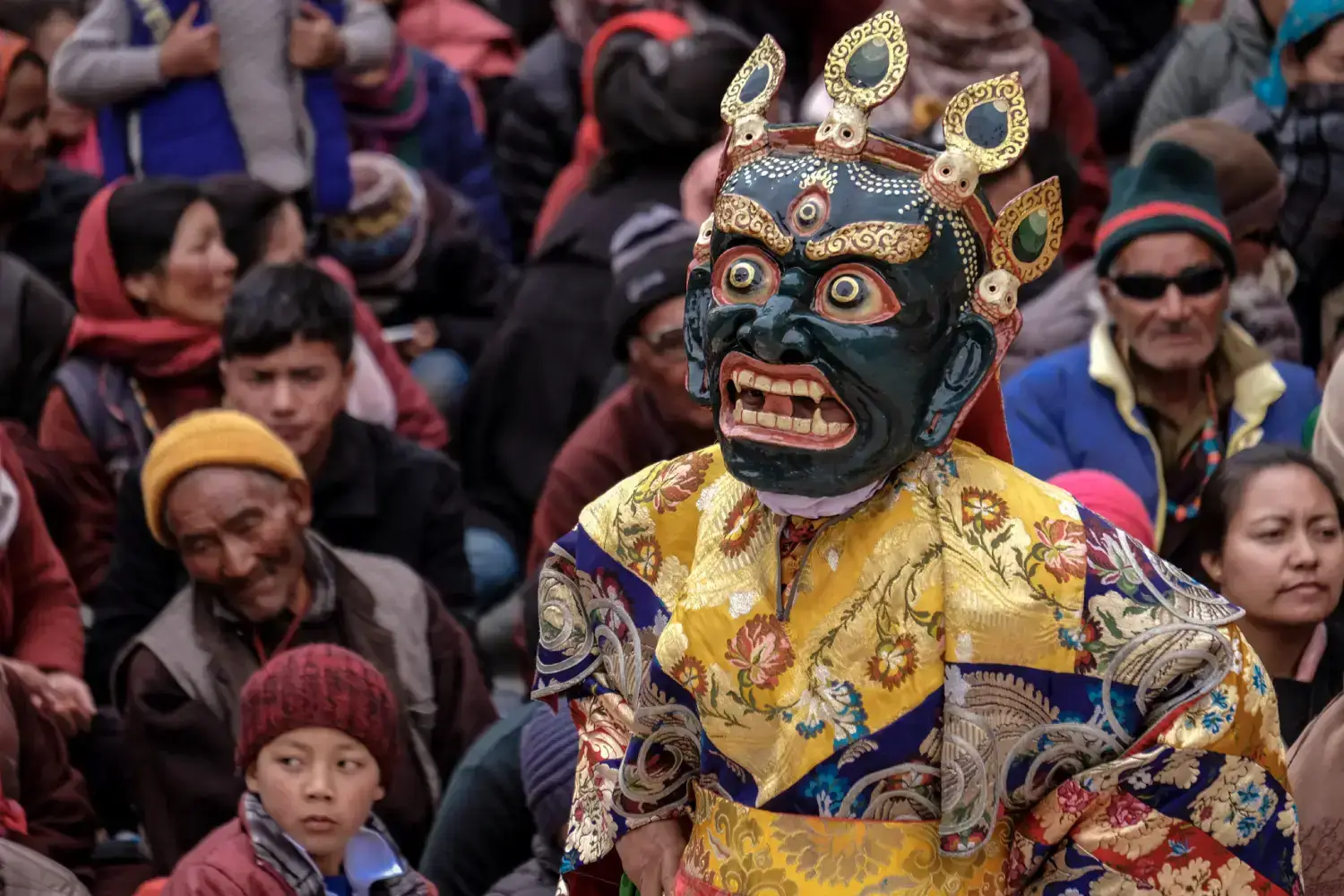
Every year in September, the fascinating region of Ladakh is the lovely as well as the culturally rich Ladakh Festival. It is said that the Ladakh Autonomous Hill Development Council (LAHDC) along with the Department of Tourism of the Union Territory of Ladakh is in charge of hosting this festival in Ladakh, which is an excellent display of the unique history of culture, habits, and style of life of the people of Ladakh. The festival highlights the traditions and heritage of the region with an abundance of events and performances, hence it is the most popular festival in Leh, Ladakh. Leh's parade becomes more entertaining and the center of attraction due to the masks dance, traditional songs, and much more.
The main attraction of the festival is the traditional sports which include archery and polo, offering guests a peek into the spirit of competition and abilities carried down through the years. Additionally, the festival includes vibrant markets where local artisans intricate their complex artwork, including handmade carpets, unique Ladakh jewellery, and Pashmina shawls, providing guests an opportunity to carry home a bit of the cultural heritage of Ladakh.

The most important and historical ceremony in Ladakh is the Dosmoche festival, which symbolizes the victory of good over evil and the purification of the area and its residents. Dosmoche, a festival that is deeply rooted in the traditions of Buddhists in the region, serves as an annual winter celebration that concludes the Tibetan New Year festivities celebrated in the month of February. Also known as the 'Scapegoat festival', Dosmoche is an occasion during which individuals believe that evil spirits are brought out and bad luck is avoided for the year to come. Throughout the religious rites, monks from various monasteries gather to build complex mandalas using colored sands that are then deconstructed to symbolize the fleeting nature of the world.
The Cham dance is done by the monks, which shows the culture of Ladakh and adorned in intricate masks and vibrant outfits, especially fascinating aspects of Dosmoche. The Cham dances narrate tales from Buddhist folklore, often displaying the victory of goods over the evil focus of darkness, and have been accompanied by echoing sounds from conventional musical instruments like horns, drums, and cymbals. The mesmerizing experience offered by the festival shows the courage, diverse culture, and faith of the Ladakh people.
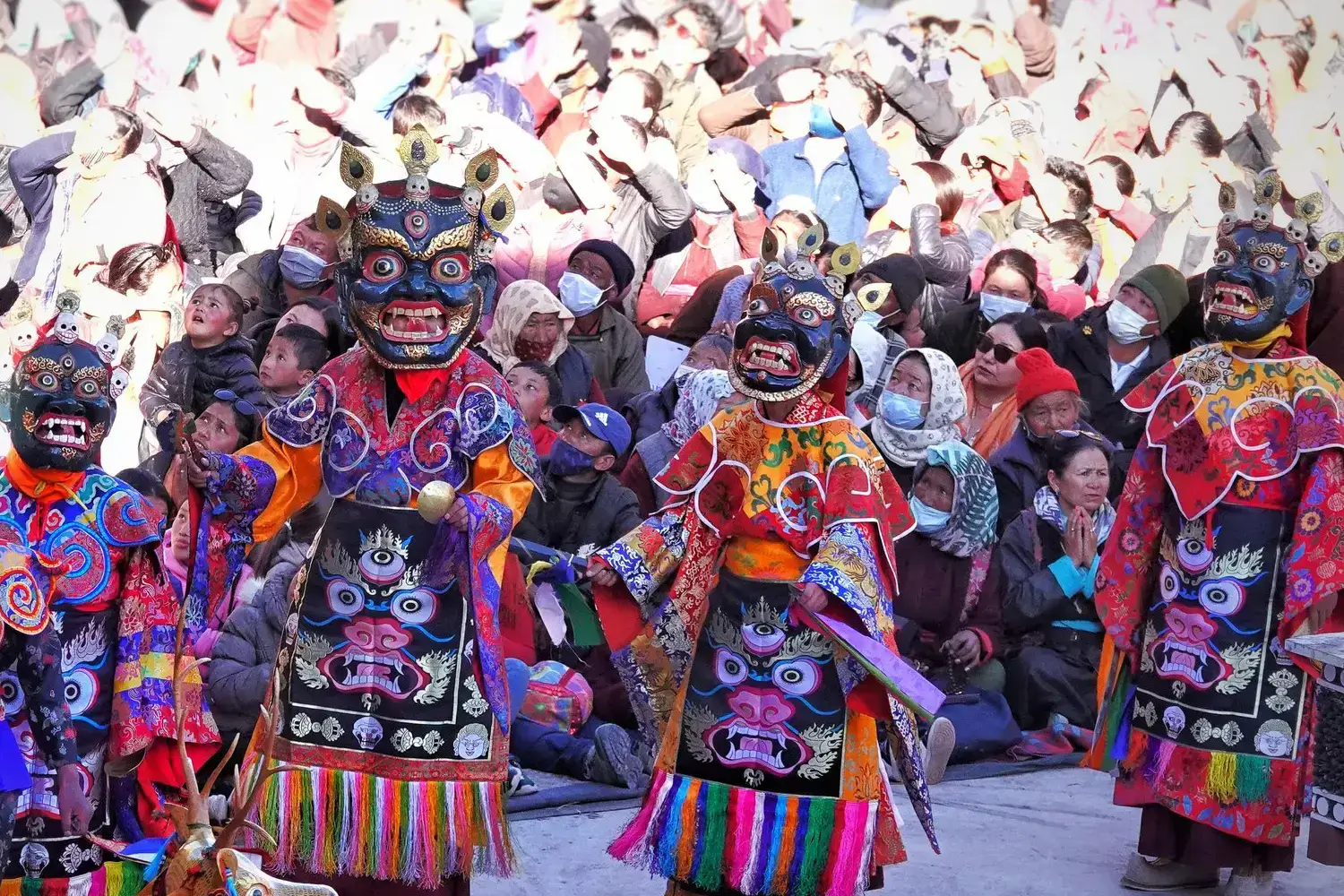
The Matho monastery in Ladakh hosts the Matho Nagrang festival, often referred to as the Oracle festival which is a two-day Buddhist celebration. The celebration is held on 14 and 15th days of the Tibetan calendars’ first month which is typically February or March. The primary attraction of the festival is the presence of two oracles, also known as the Rongstans, who after two months of meditation and prayer, come out to respond to the questions of the people and offer them a prediction for their future. Additionally, the oracle is quite popular for its miraculous exploits, which include running around the elevated fences of the monastery, jumping from the corners of the walls, and being cut by swords.
Ladakh people from across the region gather to the monasteries to engage in the celebrations, offer prayers, and seek blessings for their loved ones and their communities. Ladakhis also reclaim a bond with their heritage of culture throughout the celebration by engaging in a variety of traditions, including weaving, storytelling, and cooking. A truly incredible experience, the Matho Nagrang Festival is a lot more than a celebration of faith.
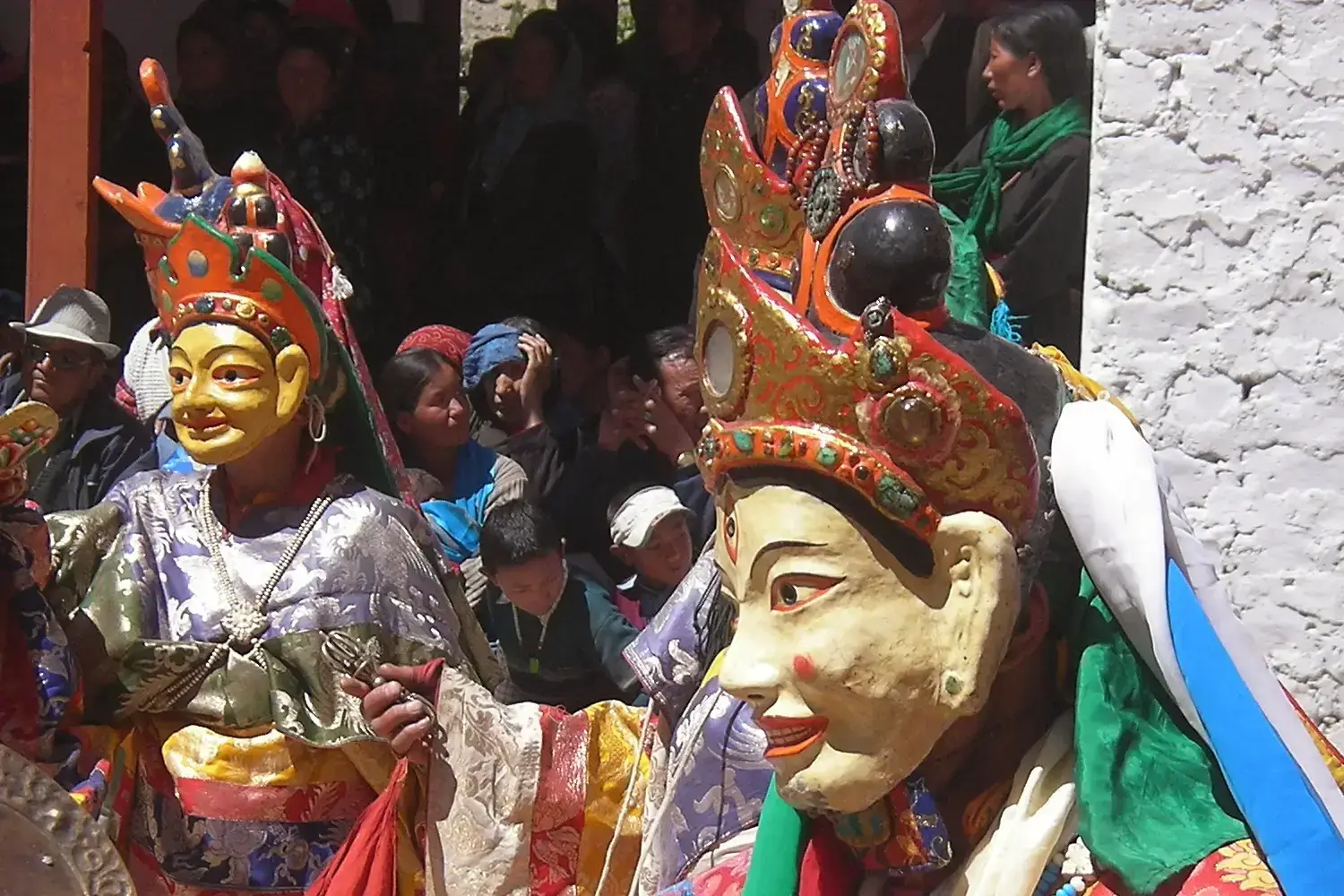
In Ladakh, the PhyangTsedup Festival is a fascinating as well as spiritually important celebration that is anticipated and highly cherished. The festival is a vital part of the extensive traditions of Buddhists of the region and takes place annually at the Phyang Monastery, which is one of the famous and oldest monasteries in Ladakh. PhyangTsedup celebrates the victory of justice over evil via monks performing the holy Cham dance. These ceremonies include a diverse group of spirits, deities, and celestial beings, each of which symbolizes an individual aspect of Buddhist cosmology.
The festival's highlight occurs when an enormous thangka, a treasured picture of protector God of the monastery, is revealed and set up on view for devotees to offer their prayers and seek blessings. Besides being an occasion for worship, the festival is also an energetic social gathering for the Ladakhi community, which attracts guests from every aspect of life to participate in the event.
With profound religious significance, the Saka Dawa Festival is the most cherished and widely celebrated Buddhist festival in Ladakh. The birth of Lord Buddha, awakening, and journey into parinirvana or nirvana are the three significant events in his life celebrated throughout the festival. Saka Dawa, which occurs in the 4th month of the Tibetan lunar calendar, is an occasion during which Ladakhis conduct intensive prayers, obey the teachings of Buddha, and work to gain virtue through performing activities of generosity, kindness, and charity.
All through the celebrations, the whole region comes up with the melody of prayer wheels spinning, shrines and monasteries offering ghee lamps, and chanting mantras. Religious devotees from all over Ladakh gather in substantial amounts to participate in religious rituals, wander around sacred locations as it is a must-seeevent in Ladakh. Guests and locals also donate food, cash, and other basic needs to monks and the poor as well.
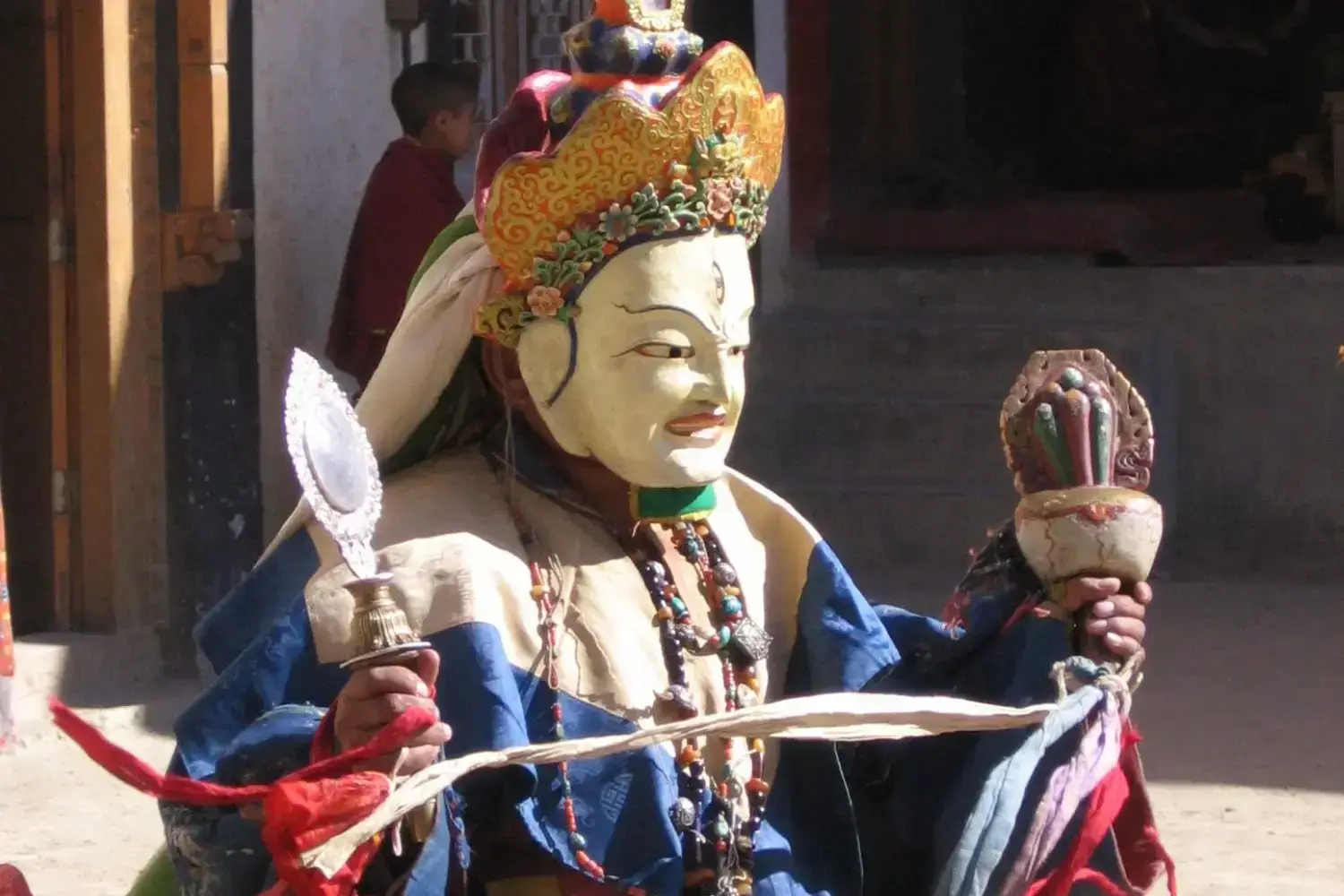
A vibrant and deeply religious event, the YuruKabgyatr Festival is held annually in the remote and serene territory of Ladakh at the Yuru or Lamayaru monastery, one of the most historic and renowned monasteries in the region. Typically held in the height of summer, this is a two-day festival that attracts both visitors as well as locals with a desire eager to take part in the cultural and spiritually rich heritage of the region. The festival, which depends on the teachings of Buddhism, includes prayer servings, elaborate ceremonies, and the fascinating Cham dance that is performed by the monks while wearing masks and vibrant and colorful costumes.
Apart from being an occasion for social connection and religious gathering, the YuruKabgyat Festival additionally provides an opportunity for people to seek prayers for wealth and safety from evil spirits. Surrounded by the magnificent beauty of Ladakh, the tranquil and lovely Lamayuru Monastery adds enchanting air to the festival and provides an utterly outstanding moment for those to choose to attend.

Celebrated every year at the Stock monastery, which has a strong connection with the imperial line of Ladakh, the Stock Guru Tsechu Festival is the most significant and ethnically diverse event in Ladakh. This festival celebrates the renowned 8th-century Buddhist guru who is famous for introducing Buddhism through the mountainous region of the Himalayas, GuruguPadmasambhava, attracts a significant number of both tourists as well as locals. During the time of the festival, which usually continues for a few days, the monastery turns into an important center of spiritual devotion, artistic screens, and harmonious relationships.
The Cham Dance, a famous masked dance done by the monks dressed up in vibrant colored ropes and beautifully carved masks, is the main attraction and popular event in the Ladakh festival. Sophisticated traditions related to the occasion involve the reading of holy texts, the lighting of lamps, and making offerings. Additionally, to serve as a spiritual event, the Stock Guru Tsechu festival allows the people of Ladakh to remember their unique cultural heritage with traditional dance, music, and food.
Experiencing the Ladakh festival tour provides an unusual viewpoint on the historic rich tapestry of the region, that has its foundation in spiritual traditions and a vibrant cultural scene. Every festival offers a rare insight into the heart of the Ladakhi people and community, where everlasting traditions, values, and customs are practiced with enormous enthusiasm. These involve magnificent events along with solitary rites and temples. The people of Ladakh celebrate these festivals as part of their mode of life, showing their strength, and belief in times of hardship and happiness. This is a unique opportunity for all the guests to engage in the prominent celebration and celebrating the rich culture and traditions of Ladakh.